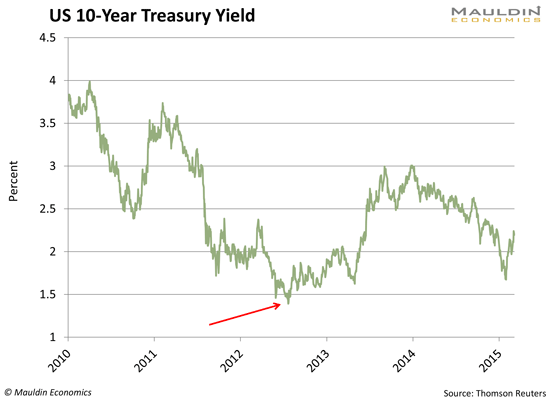Bond ETFs A New Way to Buy High And Maybe Sell Low
Post on: 16 Апрель, 2015 No Comment

THE WALL STREET JOURNAL — OCT. 5, 2009 — By TOM LAURICELLA
Most investors pay too much when buying an exchange-traded bond fund. And the risk is they may get too little of their money back when they sell.
On the surface, index-tracking bond ETFs seem like natural winners. Low fees give them a big advantage in the usually low-return bond market. Plus, investors like the transparency and the ease of buying and selling all day long.
While this is the same formula behind hugely popular stock ETFs, the inner workings of the bond market mean it isn’t a cut-and-paste task to transport the ETF structure to bonds. Thus far in the brief history of bond ETFs, investors have tended to pay more for the funds than the portfolios are worth.
Take Vanguard Total Bond Market ETF. Since its launch in April 2007, the ETF’s daily closing price has been equal to or above the net asset value—or the per-share value of its holdings—98% of the time, and 36% of the time by a meaningful 0.5% or more. The gaps typically have been much wider for municipal-bond and corporate-bond ETFs, especially those holding low-rated high yield bonds.
The price of Vanguard Total Stock Market Index, by comparison, has fluctuated within a narrower margin above and below its NAV.
On Sept. 30, 39% of U.S.-bond ETFs traded at a premium of greater than 0.5% to NAV, according to Morningstar Inc. To a large degree, these pricing issues reflect the challenge faced by all bond investors. Most bonds don’t trade on exchanges. And the gap between the offer price at which you can buy a particular bond and the lower bid price at which you can sell it is typically much wider than on stocks.
Bond ETFs set the NAV based on estimates of the prices they would get if they sold their holdings. Meanwhile, most bond ETFs are bringing in new money now, so the dealers responsible for creating ETF shares need to constantly buy new securities. That takes place at the higher offer side. To compensate, dealers will price the ETF shares higher than NAV, resulting in the bias toward a premium.
If it’s a matter of buying and selling at inflated prices, it’s a wash. But sometimes, investors who bought at a premium end up selling at a discount. If everybody is selling, it’s also a time where there may not be much liquidity in the bond market, and…funds will be trading at NAV or at a discount to NAV, says Kenneth Volpert, a principal at Vanguard Group.
In fact, when investors fled corporate bonds last fall, many bond ETFs traded at meaningful discounts. This year, some $25 billion has gone into bond ETFs, a good portion of which is chasing big returns in high-yield bonds, which are notoriously difficult to trade in tough times. How would ETF prices handle that money being pulled out in a flash?














